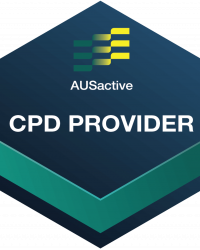Wunda Chair Repertoire
Stability:
Lateral Series: Side Flexion
Alternate Names
n/a
Derived From
Mat Pilates: Side Plank
Primary Element
Stability
To create and develop stability in the abdominal obliques, pelvis and adductors or inner thighs.
Secondary Element
Strength
To develop strength in the abdominal obliques.
Tertiary Element
Mobility
To create and develop mobility through the shoulder joint and through the torso working in the frontal plane, or in a lateral movement side-to-side.
Repetitions
8-10
Apparatus Setup
Suggested springs
- Exo Chair by Balanced Body
- Cactus style number system
- One spring on setting 1
- Resistance: light
Scan the apparatus once the client is moving for correct set up (Clain Pilates, 2002)
- Pedal position first – check the dowl is secure if split pedal
- Springs second
- Handles or small apparatus such a ball or Magic Circle last
Place foam matting or a pad over the base of the Wunda Chair underneath the pedal to stop the pedal ‘crashing’
Plane of Motion
Frontal
Targeted Muscles
To create stability and strength the key muscle focus is the external abdominal obliques, with the pelvis stabilisers, transversus abdominis and the gluteal muscles working along with multifidus and quadradus lomborm.
The adductors or inner thighs in keeping the legs connected.
Warnings
Not suitable for some shoulder, wrist and spine issues.
Execution
Sit on one side of the pelvis in the centre of the seat with both legs straight out and connected together. Press the pedal down with the underside hand and square off the shoulders, aiming to be in a line from the shoulders to the feet. The top arm ca be resting on the seat in front for support, on the hip or extended to the ceiling.
Maintain the pelvis position with the hips stacked, and try to lift the pedal up and down from the torso flexing laterally. The movement is fairly small and more about length than lifting up high. Lower the pedal with control and then repeat.
Observations
Do a body scan of the client taking note of the following points
- Pelvis
- Can the client keep the hips stacked and avoid the top hip rolling back?
- Can the client keep the pelvis still the entire time and stay connected to the legs?
- Legs
- Are the legs still, adducted and lifted slightly?
- Feet
- Are the feet pressing together?
- Apparatus
- Is there tension on the springs the whole time? Or is the pedal crashing to the base of the Wunda Chair indicating a lack of control and a push by the client beyond their ideal range of motion? If the pedal is crashing at the bottom it is likely the spring setting is too light, or more control is needed.
Learning Style Technique Cues
Auditory – word associations that connect mind and body
- Avoid pressing the pedal up and down and focus on the torso creating the movement
- Say the client’s name when you’re about to interact with them
Visual
- Imagine the head and feet being pulled in opposite directions
- Imagine the standing or seated version of the exercise with the torso lateral flexion creating the movement
- You may demonstrate a part of the movement as a visual representation for the client to see
Kinaesthetic
- Engage the gluteals and abdominals when lifting the pedal to assist in pelvis stability
- Keep the shoulders back and the chest lifted
- Try not to collapse the torso as the pedal comes up
Modifications and Variations
Regress the exercise by
- Increasing the spring setting to connect into the pelvis stability component of the exercise, practice deep core muscle activation and create more support a
- Reduce repetitions and/or pace
- Reducing the range of motion so the client can focus on pelvis stability, holding their position flexing using the abdominal obliques and keeping the legs still and engaged
- Holding onto a pole or support structure such as the side of the Cadillac with the top hand to assist with balance
Regression Repertoire to work on:
Progress the exercise by
- Lifting the top leg up and keeping it still in the air in a star position, with the top hand lifted towards the ceiling
Progression Repertoire to work towards:
Series and Transitions
This exercise is part of the Lateral series which includes:

